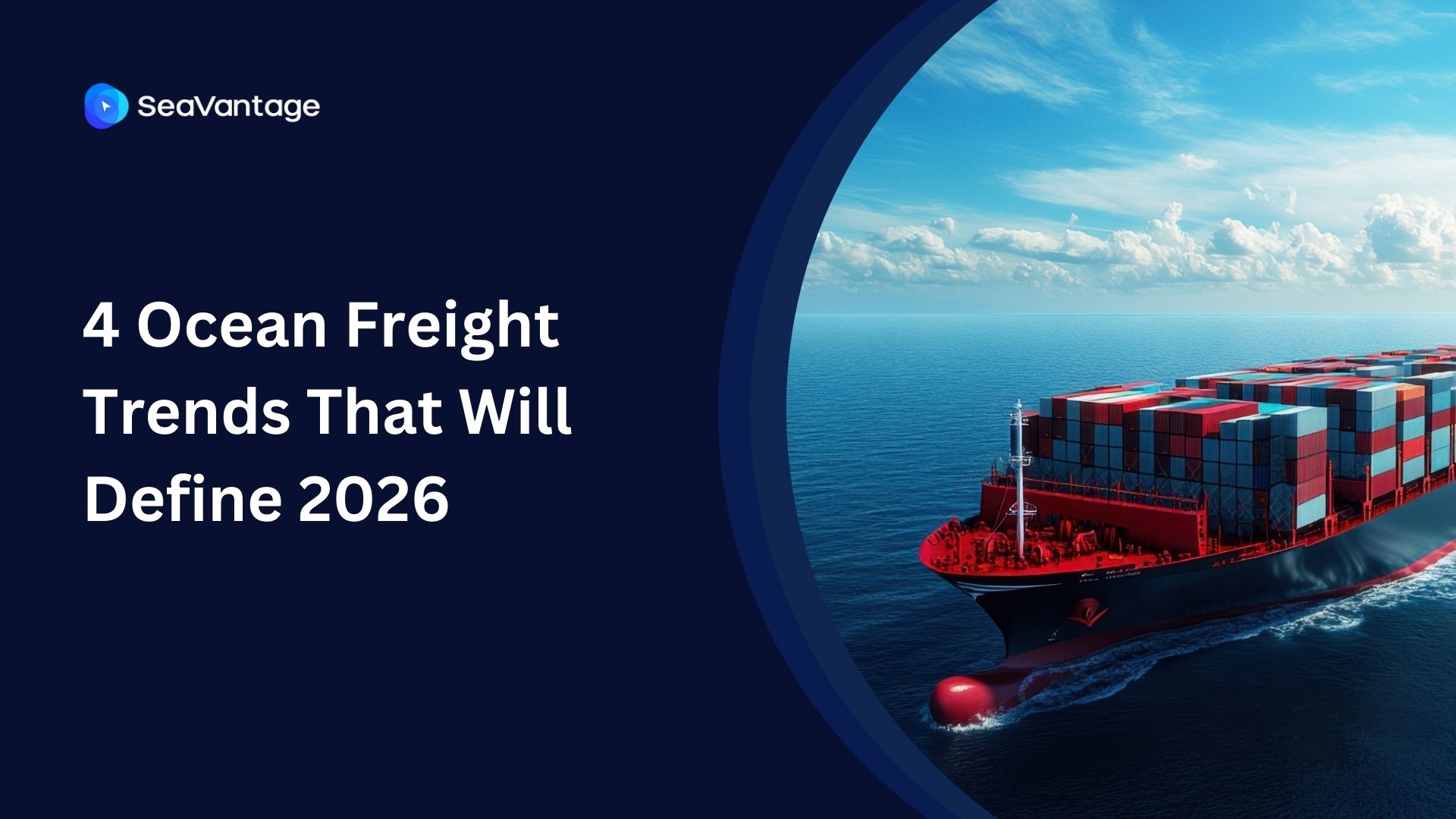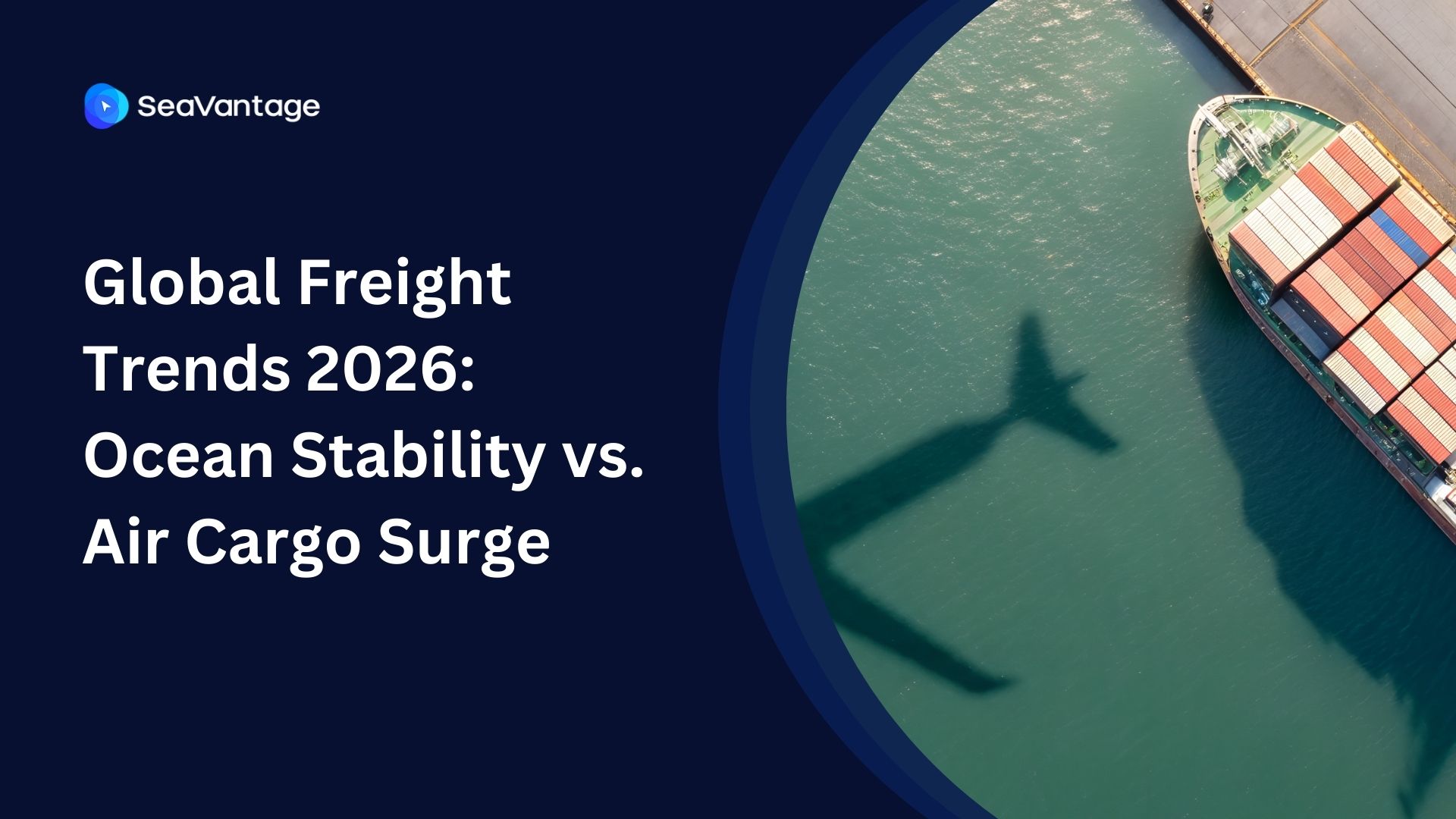Weathering the Storm: How Extreme Weather Impacts Ocean Logistics and What You Can Do About It

Extreme weather isn’t just a seasonal hiccup anymore — it’s becoming a regular threat to ocean shipping. Whether it’s a typhoon in Asia, a hurricane in the Gulf, or drought conditions choking up key canals, these events now disrupt global supply chains with alarming frequency. The stakes are high: missed port calls, delayed cargo, rising costs, and unhappy customers.
The good news? Companies are no longer at the mercy of the skies. With the right data and tools, logistics teams can see trouble coming and respond before it turns into chaos. Let’s look at how weather affects ocean freight — and how smarter visibility through platforms like SeaVantage can help you stay ahead.
The Rising Risk of Weather in Ocean Shipping
Shipping depends on smooth, predictable routes. But climate change is throwing that predictability out the window. Warmer seas are fueling stronger storms, and rainfall patterns are shifting. When the weather turns extreme, the impact is felt across the entire chain.
Here’s what can happen:
- Ports shut down for days due to storms or flooding
- Ships reroute hundreds of miles to avoid danger
- Container piles grow as terminals struggle to recover
- Delivery schedules fall apart
- Fuel use — and costs — go up fast
Even droughts are an issue. Low water levels at the Panama Canal recently caused major backups and forced carriers to choose longer, more expensive routes. In short, ocean freight takes a hit when the weather acts up.
When Weather Strikes: What It Looks Like on the Ground (and Sea)
Imagine this: a typhoon barrels through East Asia. Ships headed to Shanghai, Kaohsiung, and Busan are forced to anchor offshore. Operations halt. After the storm passes, port congestion becomes a logistical nightmare. Shipments of auto parts and electronics miss their deadlines — and factories down the line grind to a halt.
Or picture a hurricane shutting down ports in the Gulf of Mexico. Thousands of containers sit idle. Trucks can’t get in. Rail schedules fall apart. Even if the storm only lasts a few days, the recovery can take weeks.
These aren’t theoretical scenarios — they happen every year. And the ripple effect is real.
Who Gets Hit the Hardest?
Shipping lines are on the front lines. When weather forces a change of course, it means burning more fuel, rescheduling crews, and falling behind on tight rotations.
Cargo owners feel the pain too. A delayed shipment of raw materials can stop a production line. Missed delivery windows cost sales. And perishables? They might not survive the wait.
Logistics providers have to scramble. Rerouting freight, rebooking containers, updating customers — it’s all hands on deck. When storms hit, planners become problem-solvers, fast.
What You Can Do: Real-Time Tools That Make a Difference
You can’t control the weather. But you can control how you respond to it. That’s where SeaVantage comes in.
With SeaVantage, you get:
- Real-time tracking of vessels and weather systems
- Predictive ETAs that adjust based on storm paths
- Route optimization tools that help avoid disruptions
Let’s say your vessel is headed into a high-risk zone. SeaVantage flags the risk early and suggests a safer route. You notify your customers, update your team, and adjust your plans — all before the delay becomes a crisis.
It’s not just about reacting — it’s about planning smarter.
Stay Ahead of the Forecast
Extreme weather is here to stay. But delays, missed deadlines, and customer complaints don’t have to be.
By using platforms like SeaVantage, supply chain teams gain the foresight and flexibility they need to navigate unpredictable conditions with confidence. Because in this industry, the best time to prepare for a storm is long before the clouds roll in.
When the next typhoon hits or the canal slows to a crawl, you’ll be ready — with the data, insights, and tools to keep things moving.
Let SeaVantage help you weather the storm.
2025년 9월, 주요 글로벌 항만에서 어떤 운송사가 가장 긴 선박 체류 시간을 기록했는지 확인해보세요. 트렌드를 비교하고, 지연을 파악하며, 전체 항만 데이터를 통해 운송 전략을 최적화할 수 있습니다.
2025년 8월, 주요 글로벌 항만에서 어떤 운송사가 가장 긴 선박 체류 시간을 기록했는지 확인해보세요. 트렌드를 비교하고, 지연을 파악하며, 전체 항만 데이터를 통해 운송 전략을 최적화할 수 있습니다.
2025년 7월, 주요 글로벌 항만에서 어떤 운송사가 가장 긴 선박 체류 시간을 기록했는지 확인해보세요. 트렌드를 비교하고, 지연을 파악하며, 전체 항만 데이터를 통해 운송 전략을 최적화할 수 있습니다.
iscover the 4 critical ocean freight trends for 2026, from the Red Sea reopening and fleet overcapacity to shifting global trade maps. Prepare your supply chain now.
Discover key 2026 freight market trends: Port of Houston expansion, air cargo "super peak," and ocean freight stability. Plan your supply chain with SeaVantage.
Explore November 2025 global port dwell time data. See which ports and carriers led in efficiency across Antwerp, Busan, Long Beach, Rotterdam, and Singapore.



.svg)





.jpg)

.png)